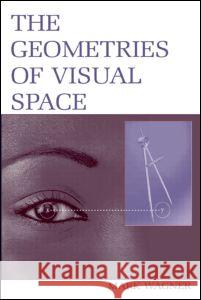The Geometries of Visual Space » książka
The Geometries of Visual Space
ISBN-13: 9780805852523 / Angielski / Twarda / 2006 / 280 str.
The Geometries of Visual Space
ISBN-13: 9780805852523 / Angielski / Twarda / 2006 / 280 str.
(netto: 674,98 VAT: 5%)
Najniższa cena z 30 dni: 654,86
ok. 22 dni roboczych
Dostawa w 2026 r.
Darmowa dostawa!
When most people think of space, they think of physical space. However, visual space concerns space as consciously experienced, and it is studied through subjective measures, such as asking people to use numbers to estimate perceived distances, areas, angles, or volumes. This book explores the mismatch between perception and physical reality, and describes the many factors that influence the perception of space including the meaning assigned to geometric concepts like distance, the judgment methods used to report the experience, the presence or absence of cues to depth, and the orientation of a stimulus with respect to point of view. The main theme of the text is that no single geometry describes visual space, but that the geometry of visual space depends upon the stimulus conditions and mental shifts in the subjective meaning of size and distance.
In addition, The Geometries of Visual Space:*contains philosophical, mathematical, and psychophysical background material;
*looks at synthetic approaches to space perception including work on hyperbolic, spherical, and Euclidean geometries;
*presents a meta-analysis of studies that ask observers to directly estimate size, distance, area, angle, and volume;
*looks at the size constancy literature in which observers are asked to adjust a comparison stimulus to match a variety of standards at different distances away;
*discusses research that takes a multi-dimensional approach toward studying visual space; and
*discusses how spatial experience is influenced by memory. While this book is primarily intended for scholars in perception, mathematical psychology, and psychophysics, it will also be accessible to a wider audience since it is written at a readable level. It will make a good graduate-level textbook on space perception.











